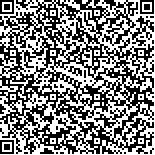下载中心
优秀审稿专家
优秀论文
相关链接
摘要

针对大气延迟时变误差影响遥感卫星十三号(YG-13A)斜距标定精度的问题,提出利用顾及大气延迟时变误差的斜距标定方法提高其斜距标定精度的策略。首先,利用基于NCEP气象资料和全球TEC数据的大气延迟改正方法来计算各标定景的大气延迟改正量。其次,将各标定景的大气延迟改正量代入斜距标定模型中。最后,在地面布设高精度角反射器控制点的情况下通过顾及大气延迟时变误差的斜距标定模型求解斜距测量系统误差,从而提高和验证斜距测量精度,角反射器控制点的平面和高程精度均优于0.1 m。利用嵩山遥感定标场地区的4组不同拍摄模式下获得的YG-13A卫星影像数据对比试验表明,相较于传统的斜距定标方法,在顾及大气延迟时变误差的情况下,4组数据的斜距改正值离散度均有所下降。利用太原、天津两个区域3景影像验证斜距改正后的精度,最小值为0.55 m,最大值为0.91 m,均值为0.70 m。试验结果证明了顾及大气延迟时变误差的斜距标定方法的有效性和可行性。
The Chinese YG-13A mission was launched in November 2015. YG-13A is equipped with a next-generation high-resolution Synthetic Aperture Radar (SAR) sensor in the X-band, with a resolution of up to 0.5 m. China can now obtain high-resolution SAR images globally. YG-13A demonstrates several improvements compared with previous Chinese SAR satellites, and these improvements include (1) higher image resolution due to a new sliding-spot imaging mode; (2) more flexible data acquisition owing to the capability to image the left and right sides; and (3) improvement in the measuring accuracy of instruments. When the radar system is operating, the radar signal travels through the medium between the antenna and ground. The radar signal encounters group delay in the ionosphere and troposphere (atmospheric path delay) because the refractive index of the atmosphere is not uniform. The range accuracy of YG-13A is thus influenced by atmospheric delay time-varying errors.
To address the range accuracy problem of YG-13A, a range calibration method that considers atmospheric delay time-varying errors is proposed to improve range accuracy. First, the atmospheric delay correction method using external data is selected to calculate the atmospheric delay correction amount for each calibration scene. Second, the atmospheric delay corrections for each calibration scene are substituted into the range calibration model. Finally, the system error of range measurement is solved with the range calibration model that considers the atmospheric delay time-varying error when a high-precision corner reflector control point is laid on the ground. The plane and elevation precision of the corner reflector control point are better than 0.1 m.
When atmospheric path delay is considered, the standard deviation of the slant range calibration values of four sets of data, namely, A1, A2, B1, and B2, is small. Images obtained over Taiyuan and Tianjin test sites show that the range accuracy of YG-13A is approximately 0.70 m in consideration of the atmospheric delay time-varying error.
Calibration results show that the method is effective and feasible. The 0.3 m orbital nominal accuracy is close to the theoretical limit. The range accuracy of YG-13A is mainly limited by the orbit accuracy determined by a single-frequency global positioning satellite. The findings prove that the range measurement of SAR does not use the attitude parameter and can achieve high precision.

